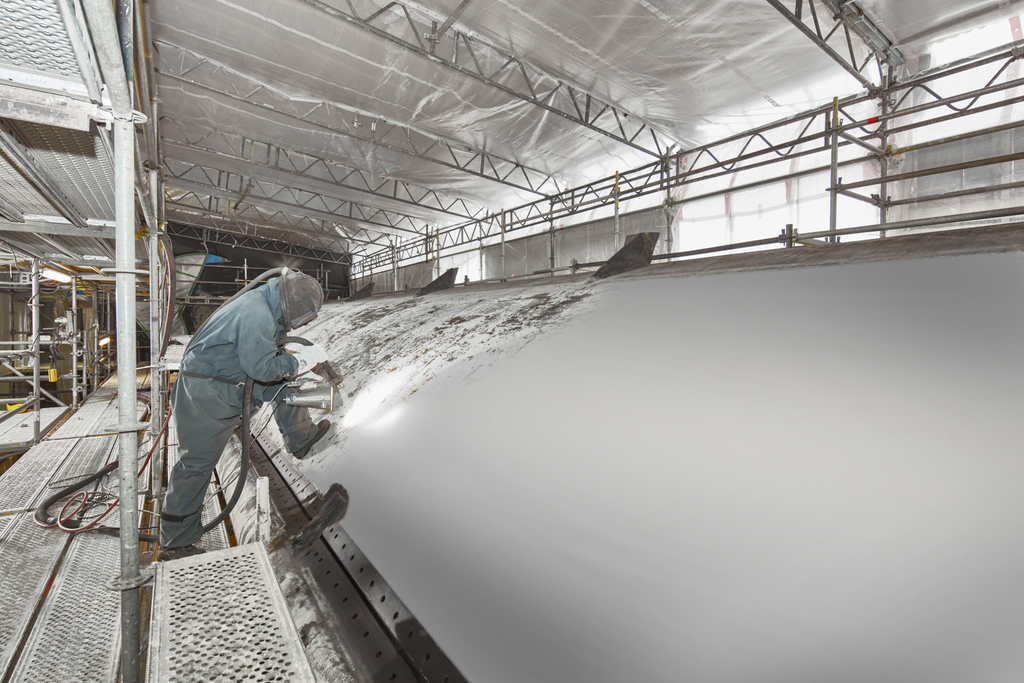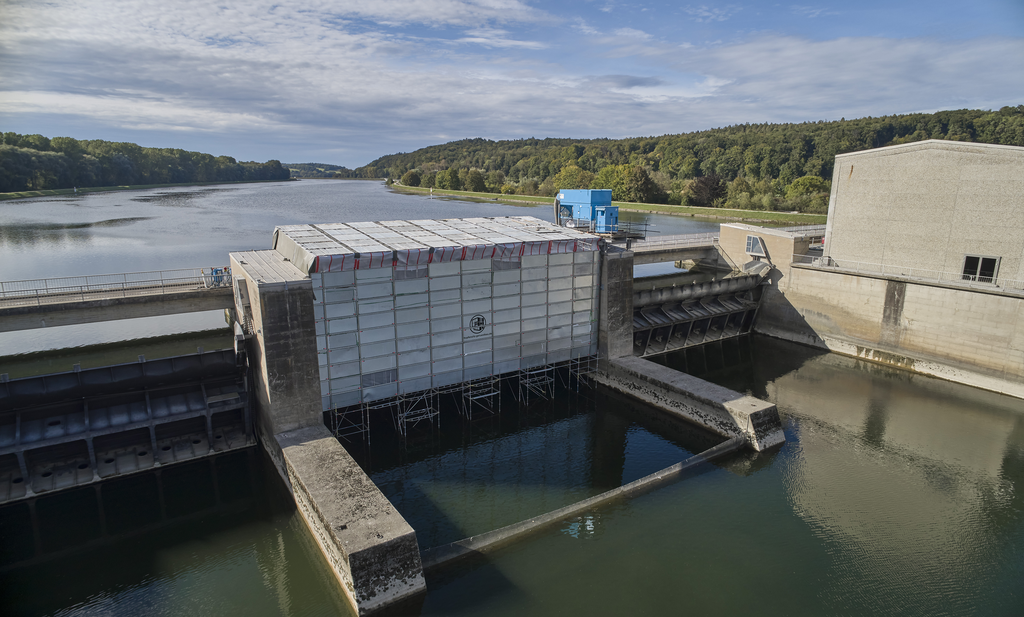
Contaminated paint in Bittenbrunn
Location: Bittenbrunn, Bavaria, Germany
Started, finished: 2022
+10
Years of experience in weir remediation
+1,200
Square meters of old coating was removed
8
Hours of clearance measurement process
Grafenrheinfeld office and weir remediation
Our Grafenrheinfeld office, led by Site Manager Dirk Lesker, has been specializing in weir remediation for a decade. Dirk has become an expert in removing contaminated paint, a common issue with weirs that have been in service for over 25-30 years.
Project inspection and contamination definition
Each project begins with an inspection to identify the type of contamination, which often involves substances like PAHs, asbestos, or lead. The necessary removal and subsequent coating steps are carefully documented and must be approved by the relevant authorities.

Case study: Bittenbrunn and working in black areas
In Bittenbrunn, the contaminated old coating was first blasted in the black area, removing the coating from a total of 1,200 square meters. After this area was measured, a new coating was applied. Working in black areas requires adherence to specific protocols, including maintaining a constant negative pressure and ensuring an air exchange rate of 8 times the room volume.
Cleaning the work area and clearance measurement
After the work is completed, the area undergoes both coarse and fine cleaning. An accredited laboratory then performs a clearance measurement of the work area using a suction system with a gold filter. The system measures in 2 different areas for about 8 hours. The gold filter is then analysed under a scanning electron microscope to ensure that the proportion of residual fibres does not exceed 10,000 fibres per m3.
Transition to white area
If the clearance measurement results are satisfactory, the black area can be removed and officially released for recoating, transitioning to a “white area”. This marks the completion of the remediation process.
Get in touch
At Muehlhan, we provide industrial services in more than 30 countries worldwide – we have a global presence but local roots.